Final Master Project M2.1 - 2014

Introduction
My Final Master Project is a project of one year that I can direct entirely from my own vision on design. During this project I develop a portfolio tool for students of primary schools. This tool portrays the knowledge, skills and interests of each student in a sensorial way, to make reflection on the personal learning development possible. During this first semester I managed to get an internship at Onderwijs Maak Je Samen with whom I am going to develop my concept to its final state.
Education
Because I am developing a tool for education, I obviously had to learn a lot about how education is currently given on primary schools. I took the opportunity to visit a number of schools who claim have integrated a different model of education in their school. I was always let to believe that schools have little freedom in implementing new ideas to change their form of education, but it amazed me to discover otherwise. Some schools have an inspiring form of education that they practice and I saw a lot of opportunities for designers as well.
I believe this is one of my skills as a designer, to discover opportunities for designs in a curtain context. Therefore, at the beginning of a new project or assignment, whether it is related to my study or not, I always try to go to the context I want to design for and meet with the people.
There are a lot of other design possibilities within the field of education besides what I am doing within this project. After my graduation I might continue in designing for educational purposes. Whether this will be as an employee or as entrepreneur, I am not sure yet. The setting in which I can develop my concept does provide me with a vast network that will be helpful when I search for a job or design opportunity.
Co-operation
The attitude to go out and meet people who can be interesting for my design project has also let me to the internship I am doing now. Over the years I am doing this study, I learned that I am not the designer that can work every day in the workshop or in his own office, doing what he likes to make or work on by himself. My inspiration and motivation come from working with other people, because this gives me the sense of reality and significance to what I am doing. My internship provides this as well. Not only does this inspires and motivates me, it also improves the quality of the design. Co-operating with others who are user or close to the context you are designing for, provide feedback and input throughout the whole process. This makes the design much more customized for the user and therefore more likely to succeed on the market.
For myself this means that if I am going to found my own company I want to do this with a partner at least to avoid the isolation in design.
Design to transform
It is an abstract statement to make: “designing for transformation”. During this project I was able to better understand what this means in practice, since I am developing a system with such a characteristic. I learned that to create a transformative design, you should have created an envisioned reality that represents an ideal scenario for that context. In the case of my project this would be the scenario of an educational system in which children are completely facilitated in their need to develop their talents and know what they what they are good at. This ideal scenario cannot be achieved simply by a product or service, because it requires the involved stakeholder to change their mindset and behavior. To transform the stakeholders I create a design that empowers them to do so. This design should fit with the current need of the stakeholders, but by using it (over time) they will adapt to the new possibilities. In time transformation of the behavior and mindset of the stakeholders take place and creates a new reality that was more or less envisioned by the designer. In my case the portfolio tool is something that fits the need of the schools and should be easy to implement in the current reality. Yet, when schools make use of the tool the children, teachers and other stakeholders become aware of the new possibilities and will adapt their educational model. This figure explains this graphically.
SLR-camera interaction
I learned that to create a design that fits the needs and abilities of the user, but can also make them change their behavior or mindset, partially depends on how the user can interact with the design. My internship mentor used an SLR-camera as a metaphor element. These cameras are complex and there are a lot of options and preferences, yet every amateur is able to make relatively nice pictures with the camera. This is because the users can start with using the auto-function. If they want to do more preferences themselves they can choose the semi-auto-function and the professionals do all the controls themselves. The user can adapt his interaction with the camera, as he is improving his skills. This doesn’t necessary change his behavior or mindset, but this interaction with the product can help to lower the threshold in using it, which I believe is important with transformation design.
Physical design for a digital product
The final design will be a digital product. This felt in a way a limitation in my process, because a digital product is limited in the interaction possibilities. I decided to make physical prototypes for the prototype of my concept and for the workshops to use the richness of physical interaction as inspiration for the digital system. I learned that this works well indeed, so this is nice method to apply when designing other (complex) digital concepts.
Context mapping and multiple intelligences
In my process I focused on the method of context mapping and the multiple intelligences theory. I found out that context mapping is a method that I often apply in my projects, but didn’t know it was a method. When I learned about the method, especially the context mapping for children, it did provide me a more concrete way to apply it in my project, which improved the depth of the process. There were also a lot of tips I should keep in mind when doing the workshop, which will probably help me as well. More on a top level I discovered that these workshops can be a different approach to the ideation process, because here you include others to create ideas. I believe this method fits me well and I am glad I created the opportunity to explore this further in the project.
I also learned about the theory of multiple intelligences. It gives an interesting and inspiring perspective on education, but I also learned it not scientifically proven. Therefore I will only us the theory of M.I. for inspiration for ideas of elements of the portfolio tool.
All-inclusive project (overall reflection)
This project has offered me all the opportunities to implement the things I wanted to implement in a design project and I therefore consider this project to be the best representative project for me as a designer. It is strongly related on my vision on design by creating a concept that can lead to a transformation in education. It is also a project that is entirely setup by design opportunities that I have found in society. This gives it a strong self-directed character, which gives me experience for being an entrepreneur. On the other hand I was able to establish an internship, which gives me the opportunity to work in a “real-life” setting.
Through workshops I can do co-creation sessions in a process that could also be a very individual process. From my first master project I learned that I should have integrated co-creation more into my process, because this fits me as a designer. In this project I am able to show how co-creation can really improve the quality of my design. This project has also a good planning and methodology of scientific background. Yet I was also able to make intuitive choses and explore different design directions, something that I wouldn’t think to be easily combined in my first M1.2 project.
All considered I am convinced that this project will be a success at the end of my M2.2 in both result and process.
Future improvements (reflecting on feedback)
Although I am content with the process and progression I make in this project, it is well observed that I have the tendency to do a lot of abstracting and analyzing, before actually making things. This has its advantages and disadvantages, but I know that I should keep the ratio between these approaches in balance. In this semester this was harder, because arrangement the internship was a few week after my FMP proposal presentation. Therefore I had to reframe my project again in the direction of OMJS. On the other hand, I instinctively felt that I wanted to go more into a making approach, as this was my original planning as well. Having discussed this with my coach, I learned I could have reframed my internship assignment by making and doing as well. This is something to keep in mind for next semester, but especially for after my graduation. I have also the tendency to adapt to the working situation I am in. This means that when working in companies after graduation, it is less likely that the approach of making and doing is encouraged that much as at the university. As a designer in a multidisciplinary team, this encouragement would be one of advantages to have a designer in a team. Therefore I have to keep training myself to make stuff, especially in the more formal situations as an internship.
Another remark in the feedback of my coach was that I should explain more about the content and results of my process, not only describing the process itself. For example the first prototypes could have been more elaborated on. This would also help the understanding of the choices I have made in my process. This is something to keep in mind for my next semester.
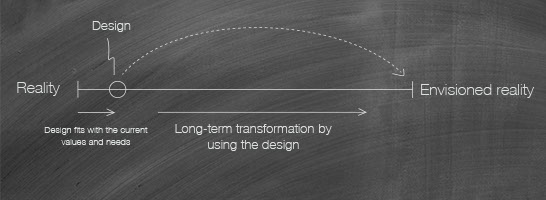
Designing for transformation graphic
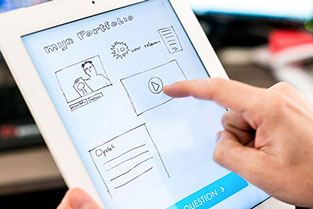
Sketch design of portfolio tool
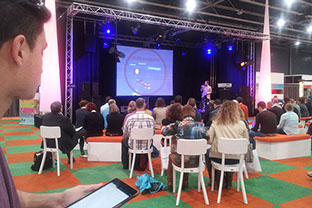
Visiting IPON (education fair)
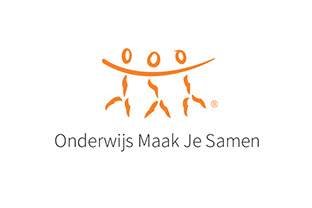
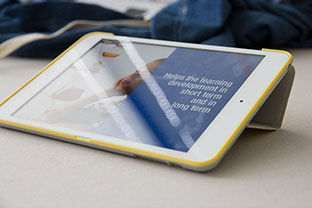
Transformation happens in the long term (photo of exhibition)
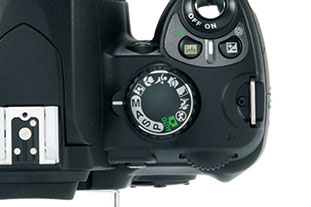
Making the threshold low in complex systems can help users to adapt
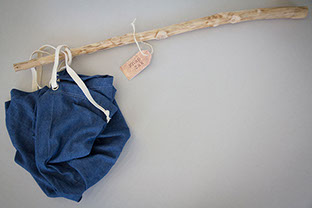
"Knapzak" tool for co-creation
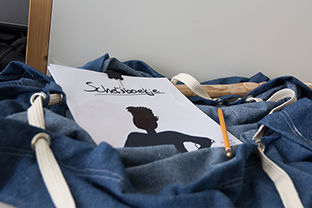
Sketch booklet for context mapping